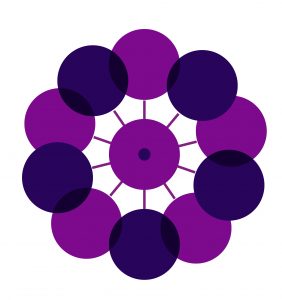Here are five different approaches to consider.
You may find that just one resonates with you, or that several make sense. There’s no right or wrong answer. We’ve had some clients move through each of these models as their programs have scaled up, while other clients stay with one approach over time.
Ultimately, it comes down to what feels right for you.
Innovative Pilots
The primary purpose of funding innovative, small, prototypes is to identify and test ideas, projects, and organizations. Some donors may wish to scale up successful projects into larger projects, while others are content to have proven a successful model that others can scale up with more funding.
Risk profile:
High
Consider this approach if you want to:
- Look for innovative ideas
- Test new approaches
What’s important to keep in mind:
- Be sure you’re comfortable knowing that some projects may fail to achieve their objectives and not deliver the impact you sought
- Some of the new ideas may prove to be effective, but you may find that you can’t scale them
Scaled-up Programs
In this approach, successful pilot projects move to the next level as refined and expanded programs, scaling up their efforts to achieve greater impact.
At this stage, the primary purpose is to create and test a replicable model that can be scaled up and deployed in either new or current geographic regions. Typically, various implementing organizations are brought together to form a loosely-knit coalition and create a community of practice. Capacity building may be included to strengthen implementers, both individually and as a network.
Risk profile:
Medium
Consider this approach if you want to:
- Fund established, promising programs for greater impact
- Build an organization’s capacity and expertise as it expands its work
- See whether a successful program model can be replicated in a different geographic context for greater reach
What’s important to keep in mind:
- Organizational growth creates its own set of problems that may not have been obvious when organizations were smaller
- Some programs may not work as well when replicated to a new geographic context
Strategic Initiatives
This approach is designed to create a holistic, long-lasting impact of a single issue in a concentrated geographic locale.
Here, a significant cluster of local, national, and international non-governmental organizations work strategically together as a community of practice. They meet regularly, aligned by common strategic objectives and multi-year funding and learn and share lessons with each other.
This stage has a formal capacity building program, and often includes a top-down dimension such as an advocacy component that leverages and reinforces the community-based work on the ground.
Risk profile:
Medium to high
Consider this approach if you want to:
- Address a specific issue in a comprehensive way
- Commit to multi-year funding
What’s important to keep in mind:
- Recognize that top-down approaches (such as trying to change policy through advocacy) are much more out of your control and can affect the ultimate success of the initiative
- An independent organization, often called a systems entrepreneur, serving as the facilitator is often needed to get various stakeholders and organizations working in a collaborative and complementary manner
Pooled Philanthropic Fund
This approach is best suited for bringing together a community of donors focused on a clear cause. Pooled philanthropic funds create a movement and can generate attention to the cause.
Since private capital has fewer policy limitations, funds can often work with other international non-governmental organizations, donors, and government to fill gaps, provide more flexible funding, and strategically leverage other existing resources.
Risk profile:
High if launching a fund yourself; low if you are joining an existing fund
Consider this approach if you want to:
- Collaborate with other donors and technical experts
- Create systemic change and have far-reaching impact
- Learn about an issue
What’s important to keep in mind:
- For those starting a fund, it can be a long and difficult process to find additional donors
- There’s significant leverage to be gained by shared learning and pooled funding
- Working with other donors means that you have less autonomy and control, and success is a shared experience
- If done successfully, the fund can be a game-changing initiative in its sector
A Diversified Philanthropic Portfolio
This approach is for funders that want a strong pipeline of programs at all stages of their development.
Similar to an investment approach—where risk is diversified across various asset classes—a philanthropic portfolio that mixes pilot programs with more established initiatives allows the donor to minimize their overall risk and expand their overall impact.
Risk profile:
Low
Consider this approach if you want to:
- Balance more risky, unproven pilots with established, successful programs
- Incubate and test ideas that can move through the above approaches over time to ultimately create wide-spread impact
What’s important to keep in mind:
- This model takes considerable time and money to build up
Every donor is different, and the approach you choose should mirror your aspirations and risk tolerance. We’ve worked with clients across all these different styles, and we can help you figure out—and then implement—the right approach for you.



